| Video |
Description |
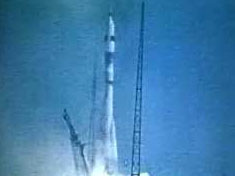 |
The Birth of NASA
Highlights the beginning of NASA (1958) and its early programs, including the introduction
of a quality control program.
|
 |
Liftoff to Learning: Microgravity
Focuses on four scientific disciplines in microgravity studies: fluid physics, materials
science, biotechnology, and combustion. Experiments within these disciplines explore
how the effects of buoyancy-driven convection and sedimentation, seen in ground-based
laboratories, are diminished in space, allowing scientists to expand their knowledge
in these areas. "Microgravity" describes the restrictions that gravity imposes on
scientific experimentation and how they can be greatly reduced in the exciting research
environment of the Space Shuttle and later on in the International Space Station.
|
 |
Astromiles-Living in Space
Contains footage from postflight press conferences of several missions showing life
aboard the Shuttle, including daily living activities and scientific experiments.
This video is educational and entertaining.
|
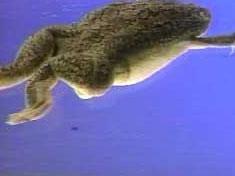 |
Animal Physiology in Space: Frog Embryology Experiment
Provides an overview of the frog embryology experiment that flew on the STS-47 Spacelab-J
mission.
|
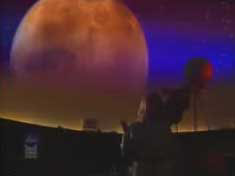 |
NASA Connnect Video Series 1990-2000, Episode 4: Geometry of Expolartion: Eyes over
Mars
The fourth of seven programs in the 1999-2000 NASA Connect Series.Students will meet
a surveyor who will explain how he surveys locations like football or soccer fields,
will describe the tools and techniques he uses, and will show students how math and
geometry are used in surveying. Students will also see how NASA researchers use geometric
shapes to navigate spacecraft to Mars and how satellites, like the Mars Global Surveyor,
and the principles of geometry are used to determine the elevation of land formations
on Mars. Students will conduct a classroom activity to apply what they have learned
about geometry and the relationship between the sides and angles of triangles.
|
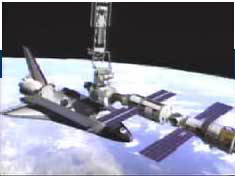 |
International Space Station, Video Progress, Report Oct. 2000
Outlines the assembly and docking sequence of the completed flights of the International
Space Station. Also touches upon the logistics of forthcoming missions as the assembly
process continues through completion.
|
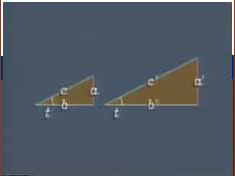 |
Mathematics, Project Mathematics: Sine and Cosines Part I
Introduces the topic of trigonometry. The sine and cosine are first derived from the
unit circle, and then their basic properties and identities are explored. The use
of sine and cosine in the description of harmonic motion is illustrated visually and
audibly with an electronic synthesizer and with musical instruments. The periodic
nature of the sine wave is discussed, and the traditional triangular derivation of
the sine and cosine is presented. Copyrighted by and reproduced with permission from
the California Institute of Technology. For educational use only. Not for international
distribution.
|
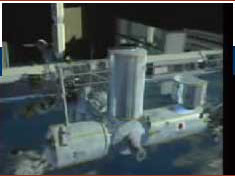 |
International Space, Station Overview
Presents an overview of the International Space Station (ISS). Discusses how research
conducted onboard the ISS will have many benefits for humankind. Outlines the roles
cooperating nations will play in the construction and maintenance of the ISS. Also
discusses station design and orbit.
|
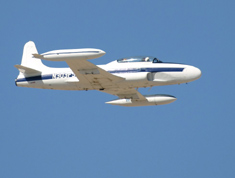 |
America's Wings, history of flight
Discuss aeronautics and airplane wing design. Presents commentaries from key research
personnel whose contributions were historically significant in the deveopment of the
modern airplane wing: Igor Sikorsky, who invented the helicopter; James Osborne, whose
small suggestion helped make jet transports fylable; Eastman Jacobs, whose wind tunnel
work in the 1930's established the shape of airfoils; Adolph Buseman, who thought
of the swept wing; Kelly Johnson, who designed 40 airplanes; and Richard Whitcomb,
who conceived the idea for the supercritical wing, the "coke-bottle" fuselage, and
the winglet.
|
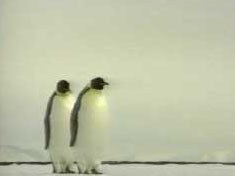 |
The Coldest, Windiest, Iciest Place on Earth & Life in Antarctica, Then and Now
Program 1: The Coldest, Windiest, Iciest Place on Earth Introduces and explores the
geology, climate, location, scale, and history of the coldest, windiest, highest continent
on Earth; one with 70 percent of all the world's fresh water, 90 percent of Earth's
ice, and regions drier than the Gobi Desert. Antarctica plays a crucial role in global
climate and holds clues to our planet's future. And while today it seems locked into
its icy identity, it was once very different, a reminder of how drastic planetary
climate changes can be. In this program, students will learn how and why Antarctica
has changed over time, how ancient continents formed and broke up, and what Antarctica
can reveal about Earth today and in the future.
|
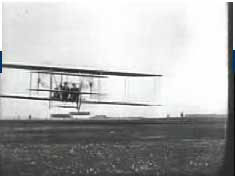 |
The NASA "Why?" Files Video Series 2000-2001 Program 4: The Case of the Challenging
Flight
Program 4: The Case of the Challenging FlightIn "The Case of the Challenging Flight,"
the six tree house detectives accept their rival's challenge to compete in the "egg-tra-ordinary"
airplane contest. They use scientific inquiry to learn about the four forces of flight:
lift, thrust, drag, and weight. The tree house detectives get a little help from their
man, Jackie Chan, the human flying machine. Two NASA "Why?" Files Kids' Club classrooms
offer their assistance along with the U. S. Navy, researchers from NASA Langley Research
Center, NASA Dryden Flight Research Center and Scaled Composites. As the contest begins,
the tree house detectives definitely have the "lift" on their competition.
|
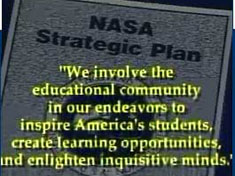 |
Investing Synopsis
This short video gives a brief summary of the why, what, and how of NASA's involvement
with the education community.
|